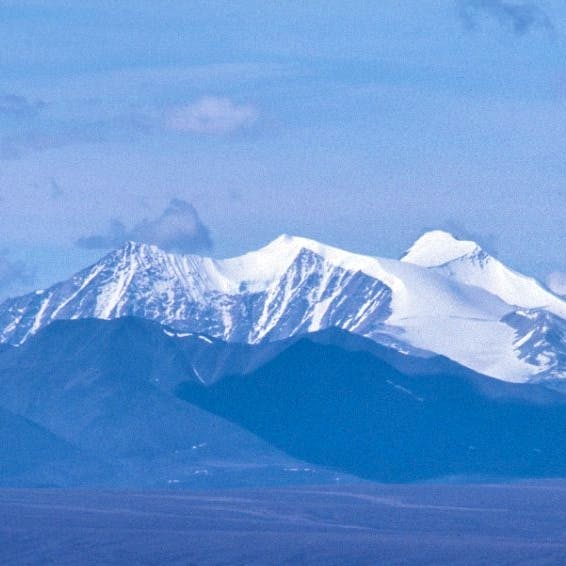FOR IMMEDIATE RELEASE
Contact: Haley McKey, hmckey@defenders.org, 202-772-0247
Washington (Tuesday, February 09, 2016) –The public comment period closes today on the U.S. Fish and Wildlife Service’s (the Service) proposed rule for managing non-federal oil and gas development on National Wildlife Refuge System lands. The current inadequate regulations have failed to prevent an inestimable amount of environmental damage from drilling on wildlife refuges, and stronger protections are desperately needed to protect these public lands, waters, air and wildlife. Defenders of Wildlife, Center for Biological Diversity, Natural Resources Defense Council and others submitted extensive comments on the proposed rule today commending the Service for taking this long-overdue step to update the 50 year-old regulations, while also offering recommendations to make the proposed rule even stronger, ensuring that protection of our national wildlife refuges is elevated to a level already afforded many of our other public lands.
The Service’s proposal lays the groundwork to secure better protections against harm caused by oil and gas drilling on wildlife refuge lands and puts a stop to careless practices that cause leaks, spills and other avoidable damage on wildlife refuges. The following are quotes from organizations that submitted comments:
“The Service’s proposed rule is an important step forward for the regulation of non-federal drilling on national wildlife refuges. Energy extraction is unfortunately common on national wildlife refuges and current regulatory measures are woefully inadequate, allowing oil and gas operations to cause immeasurable damage to refuges,” said Defenders of Wildlife’s Senior Vice President for Conservation Programs, Don Barry. “Leaks, spills, abandoned equipment and unplugged wells litter the landscape and degrade crucial wildlife habitat. While the proposed regulations are a major improvement over the status quo, more is required to ensure much needed protections for refuge resources. This is a pivotal opportunity to prevent avoidable damage caused by oil and gas drilling in the National Wildlife Refuge System in the future.”
“For decades, the public has paid for cleaning up oil and gas spills, toxic waste, and abandoned drilling sites on America’s National Wildlife Refuge System. The new rules do not go far enough to prevent these avoidable damages. The Fish and Wildlife Service can and must do better to protect our refuges and the wildlife that depend on them,” said Randi Spivak, Center for Biological Diversity’s Public Lands Program Director.
“These refuges should be safe places for America’s wildlife—but reckless oil and gas drilling is putting the sanctuaries at risk. We need better protections against spills, leaks and other disruptive activity inside these special havens,” said Land and Wildlife Program Director Sharon Buccino at Natural Resources Defense Council.
Background: When the U.S. Fish and Wildlife Service acquires lands within the boundaries of a wildlife refuge, it often only purchases the rights to the surface estate, and not to the subsurface property interests as well. This has resulted in retained non-federal mineral rights underlying national wildlife refuges across the country. When those subsurface owners, mostly private entities, decide to develop their oil and gas interests within a refuge, the Service’s existing regulatory controls have proven to be grossly inadequate for minimizing adverse environmental effects to refuge resources. The new oil and gas regulations proposed by the Service and the administration are designed to change that and provide wildlife refuges with regulatory authority that is similar to procedures that have protected national parks and national forests for decades.
The National Wildlife Refuge System is the only network of federal lands dedicated specifically to wildlife conservation—and the largest system of its kind in the world. President Teddy Roosevelt established the first refuge in 1903 to protect birds from market hunting on a small island in Florida. The system has since grown to more than 560 refuges, covering over 150 million acres of land and waters in all 50 states, a number of U.S. territories and the western Pacific Ocean, providing essential habitat for America’s astounding diversity of wildlife. In addition to serving a vital role in conservation, the National Wildlife Refuge System supports innumerable recreational opportunities and generates tens of millions of dollars in local, sustainable economic activity.
###
Get the latest Defenders news on Twitter @defendersnews.
Past press statements are available in our newsroom and be sure to visit our multimedia library and reporter resources pages for more info, including free-use photos.
Defenders of Wildlife is dedicated to the protection of all native animals and plants in their natural communities. With more than 1.2 million members and activists, Defenders of Wildlife is a leading advocate for innovative solutions to safeguard our wildlife heritage for generations to come. For more information, visit www.defenders.org.
For over 75 years, Defenders of Wildlife has remained dedicated to protecting all native animals and plants in their natural communities. With a nationwide network of nearly 2.1 million members and activists, Defenders of Wildlife is a leading advocate for innovative solutions to safeguard our wildlife for generations to come. To learn more, please visit https://defenders.org/newsroom or follow us on X @Defenders.
News

Defenders Slams Trump Interior Pick Burgum

